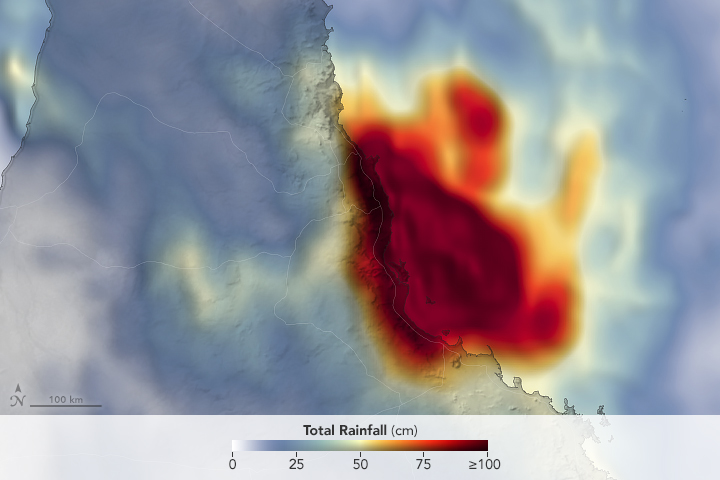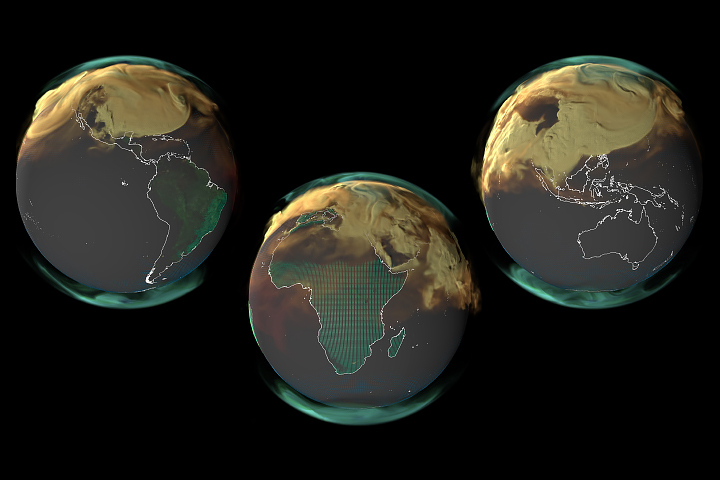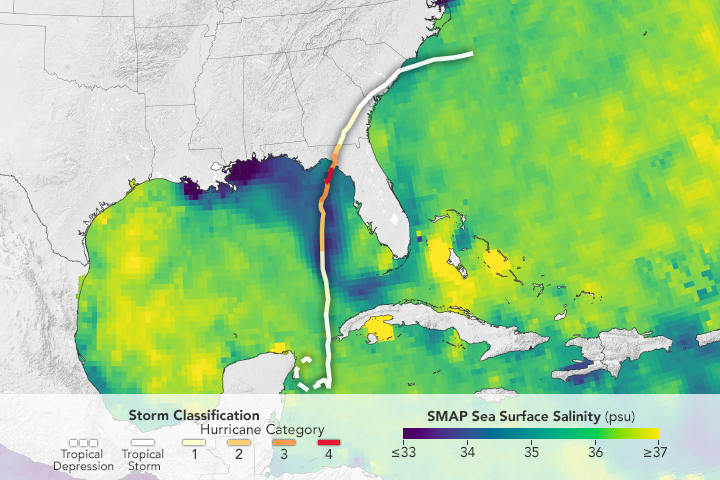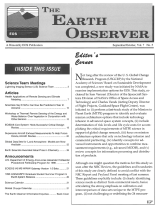



Recent Imagery
You will be directed to the NASA Visible Earth webpage when you select Images by Mission below, or click on the images at right that are randomly generated to represent four out of all possible topics.
The Earth Observer has a new look! Visit the NEW Earth Observer website.
The Earth Observer: Sep - Oct, 1995
In This Issue
Click title below to view page
Science Team Meetings
Lightning Imaging Sensor (LIS) Science Team ... 3
Articles
Health Applications of Remote Sensing and Climate Modeling .... 7
Scientists Say El Nino Can Now Be Predicted A Year In Advance .... 10
Workshop on Thermal Remote Sensing of the Energy and Water Balance Over Vegetation in Conjunction with Other Sensors ... 12
EOSDIS Core System Holds Successful Critical Design Review ... 18
Supersonic Aircraft Exhaust Measurements To Help Future Ozone, Aircraft Studies ... 20
Global Data Sets for Land-Atmosphere Models are Now Available ... 22
Earth Scientists Awarded Nobel Prize in Chemistry ... 26
Announcements
U.S. Department of Energy Announces Alexander Hollaender Postdoctoral Fellowship Program for 1996 .... 6
EOSDIS VO IMS WWW Gateway Version 1.0 Beta .... 21
1996 USRA/GSFC Graduate Student Summer Program In Earth System Science .... 30
Science Calendar .... 31
Global Change Calendar .... 31
The Earth Observer Information/Inquiries ... Back Cover
Editor's Corner
Michael King, EOS Senior Project Scientist
Not long after the review of the U. S. Global Change Researcl1 Program (USGCRP) by the National Academy of Sciences' Board on Sustainable Development was completed, a new study was initiated by NASA to examine implementation options for EOS. This study, cochaired by Sam Venneri (Director of the Spacecraft Systems Division of NASA's Office of Space Access and Technology) and Charles Vanek (Acting Deputy Director of Flight Projects, Goddard Space Flight Center), was initiated to: (i) perform a fast-track study of the Mission to Planet Earth (MTPE) program to identify and evaluate mission architecture options that include technology infusion in advanced space system concepts, (ii) include determination of risk levels and life cycle costs for accomplishing the critical requirements of MTPE science in support of global change research, (iii) focus on mission architecture options that rely on technology infusion and commercial partnering, (iv) identify concepts for advanced instruments and opportunities to combine measurement requirements (e.g., advanced MODIS), and (v) review concepts for information processing and distribution of products.
Although one might question the motives for this study so soon after the NRC Review, the guidelines and boundaries of this study are clearly defined to avoid conflict with the NRC Report and Payload Panel meeting of last summer. These guidelines explicitly include: (i) clearly identifying science needs as distinct from commercial needs, hence articulating the strong emphasis on calibration and intercomparison of data sets unique to the MTPE program, (ii) not challenging or redefining the 24 measure-...
Read more...

